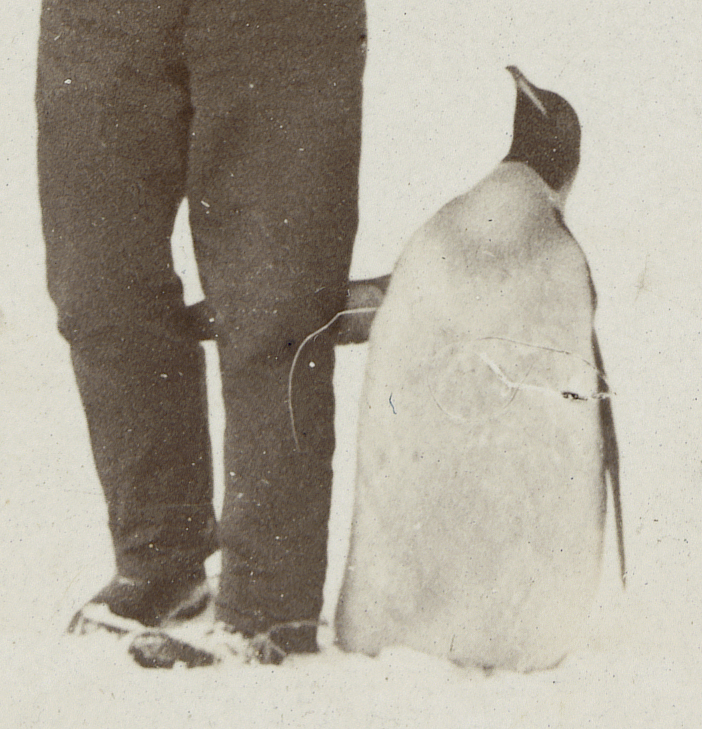The Penguin and the Piper: Telling a different story
Today is Word Penguin Day so I took the opportunity to share some of my all time favourite open licensed images from the University’s collections on twitter; the famous pictures of the piper and the penguin.
Today is #PenguinAwarenessDay
so we get to share possibly the greatest penguin pictures of all time from the Papers of William Speirs Bruce held by @CRC_EdUni. Available for reuse under CC BY licence from @Europeanaeu https://t.co/M5zVKcVp3A#OER #EdinburghsTreasures pic.twitter.com/qq3LKh8ofe
— Edinburgh Univ OERs (@OpenEdEdinburgh) January 20, 2022
These images were taken during the Scottish National Antarctic Expedition led by William Speirs Bruce in 1902 – 1904, and they are preserved among the papers of Spiers Bruce in the University’s collections. One of these images had its own 15 minutes of fame several years ago after it was added to the Wikipedia article about the expedition and a twitter user noted dryly….
Who would have believed that the perfect Wikipedia photo caption could have been improved upon? pic.twitter.com/pLedKWbs1o
— Alan Ferrier (@alanferrier) December 13, 2016
I also happen to use one of these images in my slides when I talk about the University OER Service as it’s a great way to promote the University’s open licensed image collections and a fun way to illustrate that the OER Service is composed of about one and a half people!

However these pictures also tell a different story. When I tweeted them, Malcolm Brown from the University’s Digital Imaging Unit contacted me to point out that the penguin is actually tethered to the spot with a rope tied around its legs. The rope can’t be seen in most of the low resolution images shared on the web under open licence but it is visible in the high resolution scans. Suddenly these fun images start to look rather cruel.


This raises an important question about the ethics of sharing and reusing open licensed historical content. As more museums, galleries and institutions open up their collections, all kinds of images that we might now regard as questionable at best or offensive at worst, are released into the public domain or shared under open licence. While I believe that it’s vitally important that public heritage collections are freely and openly available to the public, it’s equally important that we view these collections through a critical lens and that we consider the ethical implications of the historical images we share and reuse.
Obviously we don’t know what happened to the penguin in these pictures. I hope it was released and was none the worse for its unexpected moment in the spotlight. Learning more about this famous image has certainly made me think about how I use this picture myself, and whether I want to continue using it. Perhaps now would be a good time to have another look through our image collections to see if I can find a different open licensed image to use on my slides.


